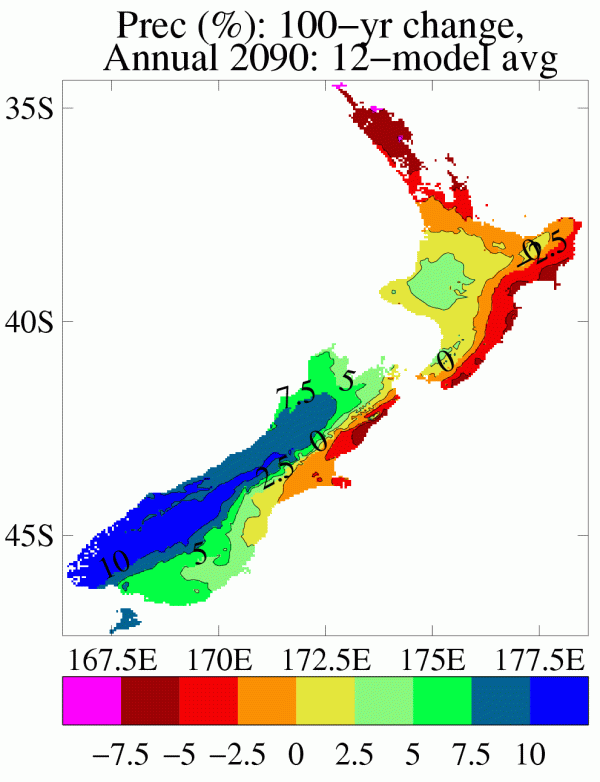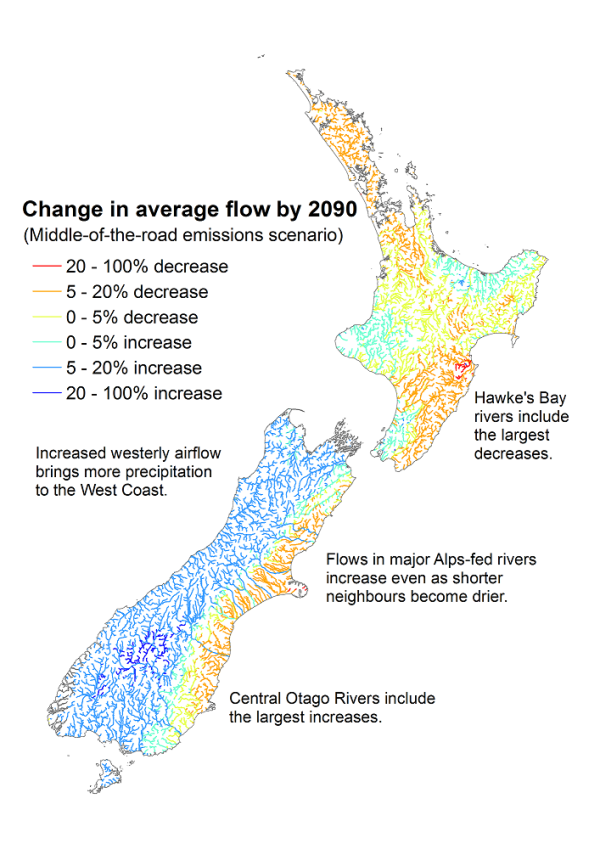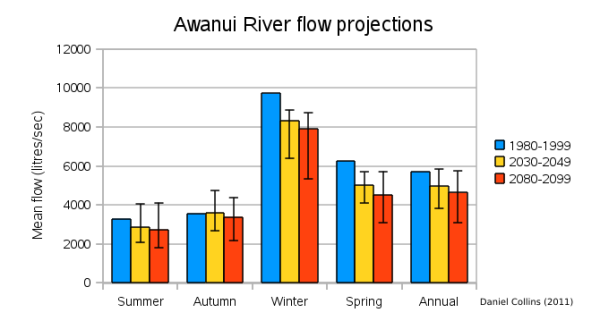New Zealand’s climate is changing – and so are our freshwaters.
These changes reflect a global pattern of increasing temperatures and shifting precipitation regimes, and are likely to alter freshwater supply and demand, aquatic ecosystems and natural hazards. This means we can no longer rely solely on the past to guide freshwater management into the future; we must account for potential climate-change impacts.
Many of the decisions water users and planners make now will have implications for decades to come. The National Policy Statement for Freshwater Management requires regional councils to take account of “reasonably foreseeable impacts of climate change".
Read the National Policy Statement for Freshwater Management.
NIWA is leading the way in understanding and helping New Zealanders prepare for these changes.
NIWA's climate change impacts assessments
Climate change impact assessments are the product of a series of linked computer models that encapsulate the physics, chemistry and biology of the atmosphere and water cycle. They start with representative scenarios of global climate change, ranging from slight to extreme warming. Using the global climate models that have been vetted for New Zealand, we downscale the projected climatic conditions to provide high-resolution projections across the country. These, in turn, are used to drive hydrological models of snow, glaciers, rivers, soil and groundwater. Projections can be made over different time periods, allowing us to chart the impact of climate change over time.
We can also estimate when the future changes in the freshwater system are likely to become detectable in hydrological records by comparing the modelled trend with natural variability. In a similar way, we can also estimate when the changes may become significant in terms of freshwater management. This is an important consideration in adaptive management and long-term planning or investment decisions.
Applications of climate-change impact assessments include:
- water allocation limit setting
- flood and drought mitigation
- water storage siting and sizing
- conservation management
- municipal water supply
- hydropower potential.
NIWA’s modelling tools can be tailored to provide the following assessments:
- mean monthly and annual river flows
- groundwater recharge and base flow
- low flows and reliability of supply
- mean annual flood and flood percentiles
- extreme rainfalls and precipitation deficits
- frequency of ecological disturbance
- timing of freshwater impacts and detectability
- uncertainty and risk
Communicating the science
Working with you, we can provide tailor-made solutions addressing your needs. These include technical reports for specific locations, regional or policy contexts and implications, stakeholder summaries designed for different communication channels, or assistance in direct community outreach.




